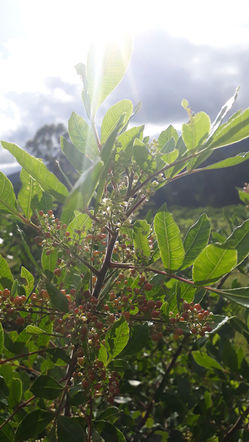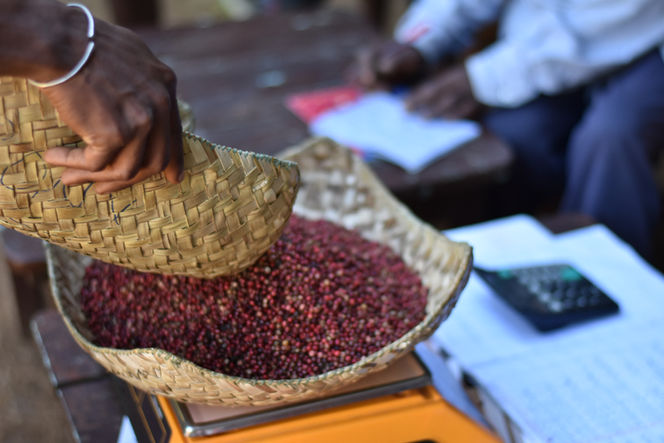
AGRICULTURE
& Conservation
AGRICULTURE
Most of our production includes Pink Berries, Vanilla and Rice, but we also produce lychees, pineapple, coffee, honey, passion fruit, oranges, lemons, grapefruit, wild pepper and many garden produce.
For more information on our products, please Contact us
CONSERVATION
geographical and social context
The Domaine is located in the Anosy region of south-east Madagascar, more exactly 9 km west of the city of Fort-Dauphin in the rural commune of Soanierana.
It rests on an old crystalline base dated Precambrian, it is a highly rugged region represented by mountain ranges.

The Domaine is found on watersheds and the Manantantely Valley.t covers 136 Hectares including 110 Ha of low altitude primary forest. It is located downstream of Tsitongambarika, a large forested massif, spread over 50 000 Ha but constantly decreasing.
The region of Fort Dauphin is subject to a humid tropical climate, precipitation on the watershed of the area is 1700 mm with a more or less regular distribution during the year. Temperatures range between 20 and 30 °C with an annual average of 23 °C.
This region is influenced by trade winds throughout the year. Mountain ranges act as an orographic barrier to amplify the moisture content of the area and increase the amount of rainfall.The specific climate of the cascade is called "wet fresh".
The domain is therefore a water reservoir that supplies the peripheral hydrographic networks. Many streams originate in the forest and meet the needs of livestock and agriculture. Also, they ensure the supply of drinking water to several neighboring communities.

The population of the region is characterized by Antanosy ethnic dominance, but families from other regions come to populate the area attracted by its economic potential. Their main activities are agriculture and livestock but also sometimes forestry (production of coal, boards or extraction of precious wood). The ecosystem of the cascade domain is therefore subject to very strong anthropic pressures.

Every day, every night and for almost 20 years, we have been trying to protect the primary forest of Domaine de la Cascade and part of the Tsytongabarika massif. It sometimes results in altercations with poachers or loggers who come to extract rare and precious species.
However, the Domaine benefits from the understanding and support of the surrounding communities, these acts are done by isolated groups and mostly condemned by the village authorities.
BIODIVERSITy
The environmental wealth of the Domaine de la Cascade
Topographic variations favor the existence of microclimates, giving rise to different types of forest easily distinguishable by their faces and the flora that compose them.

The forest ecosystem of the estate is part of the rain forest of dense low altitude humid forest type, it is in continuity with the large forest massif of the Tsitongambarika classified forest. This formation is established on a basaltic rock dome and on the Eastern basin of Manantantely.

The flora
A total of 85 species in 70 genera belonging to 48 families have been identified in this forest ecosystem (about 30 species still remain to determine !).
This ecosystem is characterized by a high endemicity with a rate of 88%, which confirms the originality and the great importance of the Domaine de la Cascade's biodiversity.
Wildlife
The overall fauna balance is as follows :
Concerning the census of the fauna of the cascade domain, studies should be carried out regularly so as to know the evolution of the species already observed and to list new ones. Moreover in front of the accelerated disappearance of the natural areas in anosy region more and more species find refuges in the Domaine.
That is why it is imperative to continue the protection of the forest, as well as the sensitization of the local populations as to the fragility of the natural environments which ensure their subsistence.


























